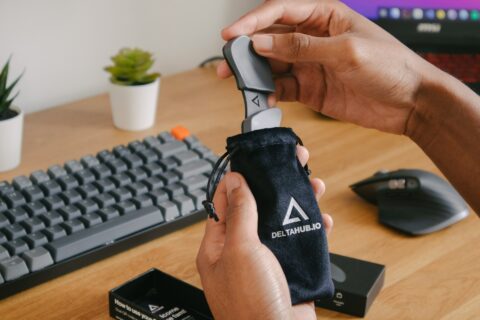
So, you’ve decided to sell your stuff online. It seems simple, right? But wait, finding the right platform can be a bit of a puzzle. Many platforms charge fees or don’t reach the audience you need, leaving you feeling a bit stuck.
Did you know that there are websites that allow you to sell items online for free? Platforms like Facebook Marketplace and Craigslist offer a cost-effective way to reach potential buyers without paying listing fees. Each site has advantages and disadvantages, depending on your selling.
This guide will help you choose the best platform and give tips for success. Ready to learn more? Keep reading!
Jump to Section [Hide]
11 Top Websites to Sell Items Online for Free
General Marketplaces (For Various Items)
General marketplaces allow you to sell almost anything. They are easy to use and great for local transactions.
1. Facebook Marketplace
Facebook Marketplace makes selling online easy and free. Over 1 in 3 U.S. residents use it monthly, making your items visible to a vast audience. There are no listing or selling fees, so you keep more profit.
If a buyer pays with a credit card, though, there’s a small processing fee of 2.9%-3.49%.
It’s great for local transactions, as buyers can browse nearby listings and pick up items in person. You can sell almost anything: tech gadgets, furniture, clothes, even handmade products! It also connects directly to Facebook user profiles, adding an extra layer of trustworthiness for buyers and sellers alike.
2. Craigslist
Craigslist has been a go-to selling platform since 1995. It operates in over 700 cities across 70 countries. You can post free listings, making it easy to sell items without paying fees or commissions.
Stay cautious while using Craigslist, as scams are more common here than on other platforms. Keep transactions local and meet buyers in safe public places to reduce risks. This site works well for furniture, electronics, and even vehicles perfect if you’re looking for an online marketplace with no extra costs.
3. Nextdoor
Nextdoor connects you with your local community. You can list items for free, focusing on local transactions. It is excellent for quickly selling furniture, electronics, or toys within your neighborhood.
You need to create an account for security. Buyers and sellers communicate through the platform’s private messaging tool, keeping things safe and straightforward.
4. OfferUp
OfferUp works great for local sales. You can list items without paying listing fees. The platform allows buyer-seller price negotiation, making deals flexible and fair.
TruYou verification helps ensure safer transactions with real users. The mobile app offers quick listings and easy communication with potential buyers nearby.
5. VarageSale
VarageSale prioritizes safety. It uses manual ID verification to ensure user trust. You can list items for free, and buyers can see transparent seller ratings before making a deal.
This platform works best for local transactions. You can sell almost anything, from furniture to toys. Use its app or website to connect with nearby buyers quickly through simple social media-style interactions.
Niche Marketplaces (Category-Specific Selling)
Some platforms focus on specific product categories, making them perfect for unique or specialized items. These sites cater to handmade goods, vintage treasures, fashion pieces, and even tech gadgets!
6. Etsy (Only for Handmade & Vintage Items)
Etsy is perfect for selling handmade products and vintage items. Over 96 million active buyers use the platform, giving your online store visibility. Buyers look for unique goods like jewelry, crafts, and art pieces there.
It costs $0.20 to list each item, and listings stay up for four months. Once you sell an item, Etsy takes a 6.5% transaction fee on the price, including shipping fees. In 2019 alone, sellers earned part of $4.97 billion in sales, a big market waiting for you!
7. Poshmark
Sell clothes, shoes, or accessories on Poshmark. Over 80 million users shop here, making it a big marketplace for fashion and sustainable fashion fans.
You pay $2.95 for sales under $15. Poshmark takes 20% for anything over $15. List your apparel easily using the app or site, and reach buyers fast with social media selling features.
8. Swappa
Swappa is an excellent platform for selling tech gadgets like phones, laptops, and tablets. You can list your item without any listing fees, making it free to start. There’s only a 3% sales fee, which buyers pay instead of you. This keeps more money in your pocket.
If you want extra attention on your listing, you can pay an optional $5 fee to feature it. Swappa ensures buyer protection by verifying listings, so both parties feel safe during the transaction.
It’s easy to use and connects directly with tech-savvy buyers who demand authentic products at fair prices.
9. Chairish
Chairish focuses on home decor and furniture. You can list items for free, making it a great option to sell online. They take a commission based on the price of the item. For sales under $2,500, they charge 20%.
If your sale is between $2,501 and $25,000, the rate drops to 12%. For anything over $25,000, you only pay 3%.
You keep 70%–80% of the selling price after fees. There’s an optional monthly fee of $99 for extra perks like elite services or marketing tools. This marketplace helps match your items with buyers who love unique styles, perfect for vintage or high-end pieces!
10. Ruby Lane
Ruby Lane focuses on selling vintage items, antiques, and collectibles. It’s perfect if you have unique or old treasures to sell. This platform charges a $45 monthly maintenance fee.
You also pay a 9.9% service fee for each sale made through your online store.
It attracts antique lovers and serious buyers looking for quality pieces. Use it to sell retro jewelry, rare furniture, or collectible art. While some fees exist, no listing fees exist, so adding new products won’t cost extra upfront!
11. Decluttr
Sell tech gadgets and books quickly on Decluttr. You pay no listing fees, making it cost-free to start selling. Decluttr offers instant payment once your items are received and approved, saving you from waiting for payouts.
You can sell old phones, CDs, DVDs, textbooks, or other electronics here. Their streamlined process provides a quick way to declutter while earning cash!
How to Choose the Right Selling Platform
Pick a platform that fits your items and appeals to your buyers. Find out more below!
Match Your Items to the Right Marketplace
Different marketplaces work better for specific items. Sell handmade products on Etsy, which is known for vintage and unique goods. Use Swappa to sell tech gadgets like phones or laptops without listing fees.
Poshmark handles sustainable fashion and secondhand clothing well.
For general items, Facebook Marketplace or Craigslist easily connects you with local buyers, saving time on logistics. Ruby Lane suits antiques but has small selling fees. Pick platforms that match your product categories for higher success rates!
Consider Your Target Market
Think about who will buy your items. Selling handmade products? Etsy works best, with 96 million buyers shopping there for unique finds. Have tech gadgets? Use Swappa, which is known for its safe tech sales.
Local shoppers use Facebook Marketplace or Craigslist. These platforms are suitable for furniture or household goods. Ruby Lane is perfect for vintage lovers. Match the platform to your buyer’s needs and interests for better success.
Understand Platform Policies
Check the platform’s rules before listing items. Each site has fees and guidelines you must follow. For example, Etsy charges a $0.20 listing fee and a 6.5% transaction fee per sale.
Chairish takes up to 20% commission for sales under $2,500 but lowers this for higher amounts.
Some platforms ban specific products, such as counterfeit goods or technology with missing parts. Read policies carefully to avoid issues or account bans later. Buyer protection features vary, too. learn how disputes are handled on sites like Facebook Marketplace or eBay before selling items from online stores!
Tips to Maximize Success on Free Selling Platforms
Stand out by making your listings clear and appealing. Quick replies and fair pricing can attract more buyers.
Create High-Quality Listings
Use clear, bright photos of your items. Platforms like Etsy and eBay let you add multiple pictures for better views. Take shots in good light to show every detail. High-quality images grab buyers’ attention quickly.
Write short but detailed descriptions. Include size, color, condition, brand, or unique item features. Keywords like “handmade items” or “tech gadgets” help search engines find your product listings faster.
Set Competitive Pricing
Check items like yours on other online marketplaces. Look at their prices to get a good idea. Match your pricing with similar listings, but stay realistic.
Remember platform fees and shipping costs. These can quickly eat into profit margins. Add these expenses when setting your price to avoid losing money.
Respond to Buyers Quickly
Answer messages fast. Buyers on platforms like Facebook Marketplace and OfferUp expect quick replies. Delayed responses can make them lose interest or turn to other sellers.
Use app notifications to stay updated. Fast response times increase trust and help secure sales faster. Being prompt shows good service, attracting more serious buyers.
Promote Your Listings
Use social media platforms like Facebook or Twitter to boost your reach. Share your product links on groups or forums related to your items. Platforms with social commerce features, like Instagram, help you get more eyes on your listings.
Update listings often to keep them fresh. Some marketplaces push newer posts higher up in search results. Use Shopify for tools that integrate with Amazon and eBay, letting you manage promotions from one spot.
Ensure Safe Transactions
Stick to platforms with ID checks, like OfferUp’s TruYou or VarageSale. These tools confirm users’ identities, making exchanges safer. For local transactions, meet in well-lit public places.
Avoid isolated areas.
Use secure payment processors such as PayPal to protect your money online. Steer clear of wire transfers or gift cards; scammers love these methods. Check buyer reviews on marketplaces like Facebook Marketplace before closing deals.
The Bottom Line
Selling online for free is easier than ever. From Facebook Marketplace to Etsy, there’s a platform for everyone. Choose sites that match your items and audience. Use great photos, fair prices, and quick replies to succeed.
Start selling today, your buyers are waiting!
Additional reading: Top Selling Sites to Maximize Online Profits








